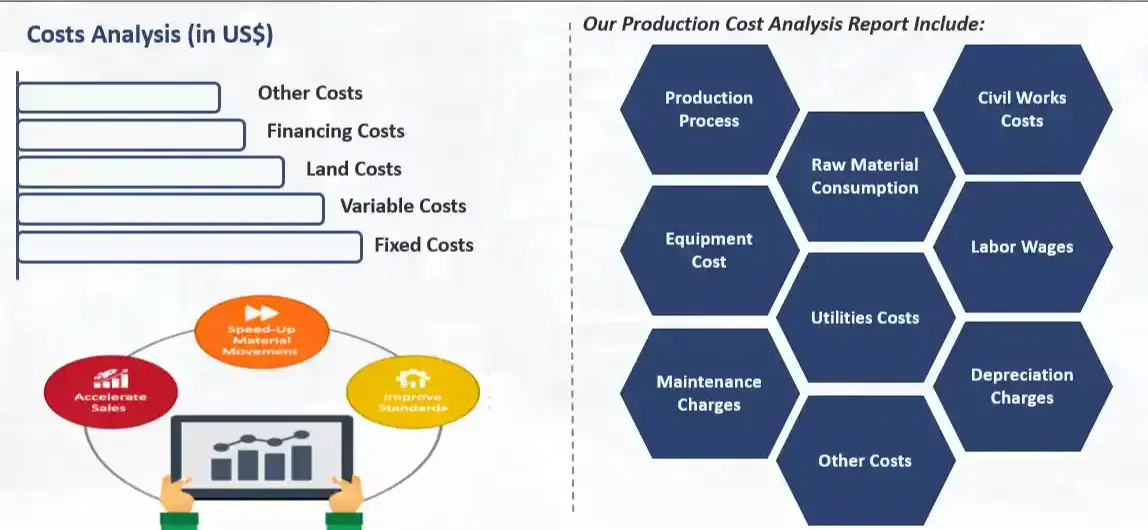Welcome to our comprehensive exploration of Onion Production Cost, where we delve into the intricacies of cultivating this essential vegetable. Onions are a staple ingredient in cuisines worldwide, and understanding the economics behind their production is crucial for farmers, policymakers, and consumers alike. In this in-depth article, we will analyze the cost components involved in onion farming, explore key factors influencing production costs, and provide insights into the challenges and opportunities in the onion cultivation industry.
Cost Components of Onion Production
- Land Preparation: The process of preparing land for onion cultivation involves plowing, leveling, and soil amendment to create optimal growing conditions. Costs associated with land preparation include labor, machinery rental, fuel, and soil amendments such as fertilizers and organic matter.
- Seed Selection and Procurement: Onion seeds are selected based on variety, disease resistance, and yield potential. Seed costs vary depending on seed quality, quantity, and sourcing, with hybrid seeds generally commanding higher prices than open-pollinated varieties.
- Seedling Production: Onion seeds are germinated in seedling trays or seedbeds before being transplanted to the field. Seedling production costs include seedling trays, potting mix, irrigation, fertilization, pest management, and labor for seedling care and maintenance.
- Irrigation: Onions require adequate moisture throughout the growing season to ensure proper bulb development and yield. Irrigation costs include the installation and maintenance of irrigation systems, water supply, energy for pumping, and labor for irrigation management.
- Fertilization: Proper soil fertility is essential for onion growth and development. Fertilization costs include the application of nitrogen, phosphorus, potassium, and micronutrients based on soil test recommendations and crop nutrient requirements.
Request Free Sample – https://www.procurementresource.com/production-cost-report-store/onion/request-sample
- Pest and Disease Management: Onions are susceptible to various pests and diseases that can reduce yields and quality if left untreated. Pest and disease management costs include the purchase and application of insecticides, fungicides, and herbicides, as well as labor for scouting and spraying.
- Weed Control: Weed competition can significantly impact onion yields, necessitating effective weed control measures. Weed control costs include the use of herbicides, cultivation, mulching, and hand-weeding labor.
- Labor: Onion cultivation involves labor-intensive tasks such as planting, transplanting, weeding, irrigation, pest management, and harvesting. Labor costs account for a significant portion of total production expenses, particularly during peak labor-demanding activities.
- Equipment and Machinery: Mechanization can help streamline onion production operations and reduce labor costs. Equipment and machinery used in onion farming include tractors, planters, transplanters, irrigation systems, sprayers, and harvesting equipment.
- Storage and Post-Harvest Handling: Proper storage facilities are essential for preserving onion quality and prolonging shelf life. Post-harvest handling costs include curing, drying, grading, packing, storage, and transportation to markets or storage facilities.
Factors Influencing Onion Production Costs
- Geographic Location: Onion production costs vary depending on the geographic location, climate, soil conditions, and availability of water and labor. Regions with favorable growing conditions and lower input costs may have a competitive advantage in onion production.
- Scale of Operation: Economies of scale play a significant role in onion farming, with larger farms often benefiting from lower production costs per unit area or per bulb compared to small-scale operations.
- Technology Adoption: Adoption of modern agricultural technologies and practices such as drip irrigation, precision farming, mechanization, and integrated pest management can enhance productivity and efficiency, thereby reducing production costs.
- Input Prices: Fluctuations in input prices, including seeds, fertilizers, pesticides, fuel, and labor, can influence onion production costs and profitability. Price volatility in input markets may necessitate cost management strategies and risk mitigation measures.
- Market Access: Proximity to markets, transportation infrastructure, and market demand influence onion production costs and marketing expenses. Access to markets with higher prices and efficient distribution channels can improve farm profitability.
- Government Policies: Government policies related to agricultural subsidies, price supports, trade tariffs, taxation, and regulations can impact onion production costs and farm profitability. Supportive policies that promote investment in agriculture and provide risk management tools can enhance the competitiveness of onion farmers.
Challenges and Opportunities
- Price Volatility: Onion prices are subject to seasonal fluctuations, market demand-supply dynamics, weather conditions, and trade policies. Price volatility can pose challenges for onion farmers in managing cash flow, marketing decisions, and risk exposure.
- Input Cost Escalation: Rising input costs, including seeds, fertilizers, pesticides, and labor, can squeeze profit margins for onion farmers, particularly smallholders with limited resources. Efficiency improvements, cost-saving measures, and input subsidies may help mitigate the impact of input cost escalation.
- Climate Change Risks: Climate change poses risks to onion production through altered precipitation patterns, temperature extremes, water scarcity, and increased incidence of pests and diseases. Adaptation strategies such as crop diversification, resilient varieties, and water-saving technologies are essential to build climate resilience in onion farming.
- Market Access and Value Addition: Improving market access, market information systems, and value addition opportunities can enhance the competitiveness of onion farmers and improve farm income. Value-added products such as dehydrated onions, onion powder, and onion-flavored snacks offer opportunities for diversification and value capture.
- Sustainable Production Practices: Adopting sustainable agricultural practices such as organic farming, conservation tillage, soil health management, and water conservation can improve soil fertility, biodiversity, and environmental sustainability in onion production. Sustainable practices also respond to consumer preferences for environmentally friendly and ethically produced food products.
Conclusion
In conclusion, onion production involves a diverse range of cost components and factors that influence production costs, profitability, and sustainability. By understanding the economics of onion farming and addressing challenges through technological innovation, efficient resource management, and market-oriented strategies, onion farmers can enhance productivity, resilience, and livelihoods. Sustainable onion production practices that prioritize environmental stewardship, social responsibility, and economic viability are essential for building a resilient and thriving onion farming sector that meets the food security needs of present and future generations.
